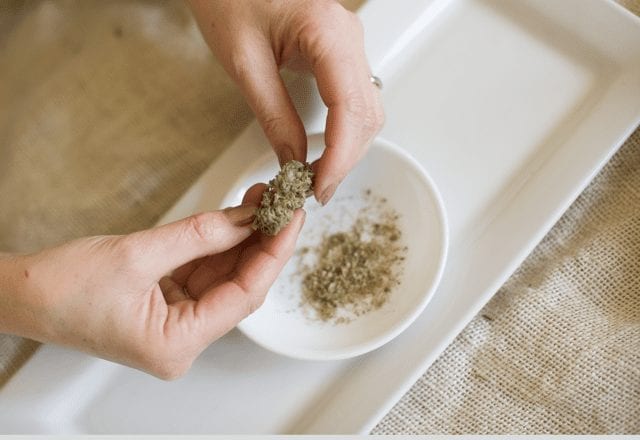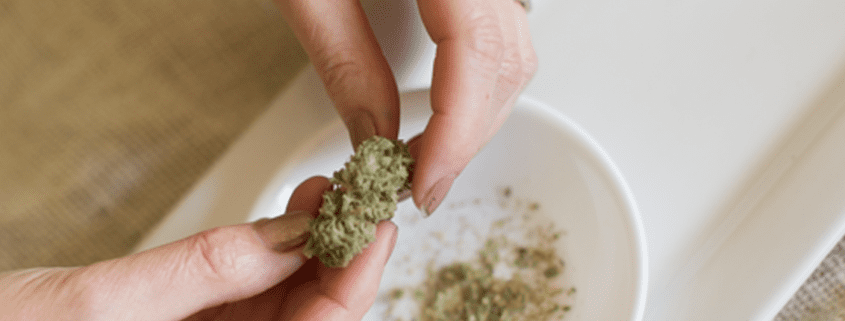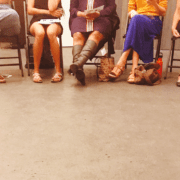My Cannabis Wellness Story
| Aliza Sherman is co-founder of Ellementa |
Disclaimer: I am not a doctor. I am a woman sharing my story.
When I first heard about cannabis for non-addictive pain relief and insomnia relief, my first thought was, “If it is so effective, then why is it illegal?”
I’ve been suffering from chronic neck pain for several years after two frozen shoulders and a few years of physical therapy trying to get my mobility back. I was in my mid-40s with the first frozen shoulder, my late 40s with the second one, and in my early 50s in near-constant neck pain from years of computer use.
I’ve always refused to take any pill stronger than Advil, and I’ve worried about the effects of too much Advil on my liver. I decided long ago that opioids would never be for me, long before the news was filled with horror stories about the ravages of opioids in our communities nationwide. I won’t take sleeping pills after a nightmarish Ambien experience that left me hallucinating. So I suffered.
And I wasn’t the only one who suffered. My family endured the ill effects of my lack of sleep and chronic pain – irritability and a short temper being the most prevalent.
I was a ticking time bomb, ready to explode from sleep deprivation and frazzled nerves.
I was miserable and making everyone around me miserable.
Exploring cannabis as a wellness alternative wasn’t simple even for me: a woman who has embraced alternative medicines, herbs, homeopathy, applied kinesiology, chiropractic and the like since the 1980s.
First, there was the issue of legality.
The federal government still clings to anti-marijuana propaganda dating back to the early 1900s. Yes, that’s how out of touch and outdated the War on Drugs’ inclusion of marijuana is, not to mention racist and corrupt. But that’s another story.
My Cannabis Experiences
From a legal standpoint, I was living in Alaska, a state where cannabis had been legal for personal use since the 1970s. Still, I didn’t know the first thing about obtaining marijuana legally for pain relief, much less what to buy or how to consume it.
I still felt fear about turning to cannabis, no matter how much research I read from credible medical and scientific sources dispelling the myths. I was the girl who in fifth grade won Honorable Mention for a science fair exhibit called “Close Encounters of the Worse Kind” where I regurgitated the information I found in 1980s textbooks that marijuana was a “gateway drug” to heroin, something that has been disproven many times over but is still a falsehood perpetrated by our government today.
Sure, I smoked a little pot back in high school and college. I wasn’t entirely ignorant about cannabis or smoking accessories. Yet in my early 50s, I felt lost and embarrassed and somewhat afraid to consider cannabis to relieve the pain that was casting darkness over my life.

Obtaining Cannabis
As I educated myself about the business and marketing side of cannabis, I began speaking at cannabis-related events. At one event, I happened upon a booth where a company guided people step-by-step through the process of getting a marijuana medical card. I paid several hundred dollars to go through the process.
While it was a relief to have someone knowledgeable guide me, I later learned that because I was over 21 and living in a legal state, I didn’t need a medical card for cannabis. I made an expensive mistake because of my own ignorance about the laws. I should have asked around, but that brought me back to my embarrassment about lacking in knowledge.
Finally, I connected with several women who were incredibly kind and generous with information about cannabis. One explained to me the various compounds within the cannabis plant that can be released when consumed providing potentially positive effects including anti-inflammatory, analgesic and sedative.
Another woman agreed to be my “caregiver” to provide me with legally grown cannabis. Alaska has a caregiver model versus a medical dispensary model. Individuals are allowed to grow a certain number of cannabis plants for a limited number of patients.
Now I had cannabis and a dried flower vaporizer (also known as a “vape pen”) that offered precise temperatures to release specific terpenes for specific effects (insomnia relief, for example) – and I was still nervous about trying it.
When I finally mustered the courage, I was careful to consume at bedtime after the kids were asleep – just two to three puffs off the vape pen. Then I read or worked some crossword puzzles until I drifted to sleep. The first time I tried it, I slept through the night. Not only did I sleep through the night, but I did not wake up in pain, I did not have night sweats (something common whenever I have a glass of red wine in the evenings), and I woke up clear headed and rested.
That first morning when I realized I had slept an uninterrupted eight hours, I cried.
A Mission Around Cannabis Wellness
I still am nervous about consuming, but I’m getting more comfortable over time. I don’t do it around my family. I worry about the smell even though vaporizers are less odorous than other smoking implements.
I don’t use it nightly mostly because I don’t want there to be any cumulative effect from regular use, and I don’t want to become overly reliant on it. These are my own personal fears – not based on facts. After decades of hearing the propaganda, I still have a ways to go until I fully embrace this healing plant.
When I am not smoking, I apply a CBD Hemp Extract topically to my neck and shoulders for some relief.
I’m still in the learning stage, but hearing so many women talk about the wellness benefits that cannabis is bringing to their lives, I realize I’m not alone.
Now I’m on a mission to help other women like me understand more about cannabis for wellness, for themselves – and in some cases, for their loved ones. The stories – about cannabis helping children with epilepsy, helping cancer patients with appetite and with relief from chemo-induced nausea, helping seniors with arthritis pain and even calming the agitation from dementia – are mind-boggling.
How could a natural and ancient healing plant with unique properties and benefits be outlawed?
It really makes you question the motives behind decisions to bar access to something that time and time again has proven not to be a dangerous substance; something that continues to help people who are suffering find non-addictive, low-side-effect relief from their pain.
I’m on a mission to empower women with knowledge so they can make informed decisions about cannabis wellness in a safe and discreet way, learning from other women who have experience and wisdom to share.
If you are interested in learning more, please join our email list to be stay on top of news and events around cannabis wellness so we can accomplish this mission, together.










